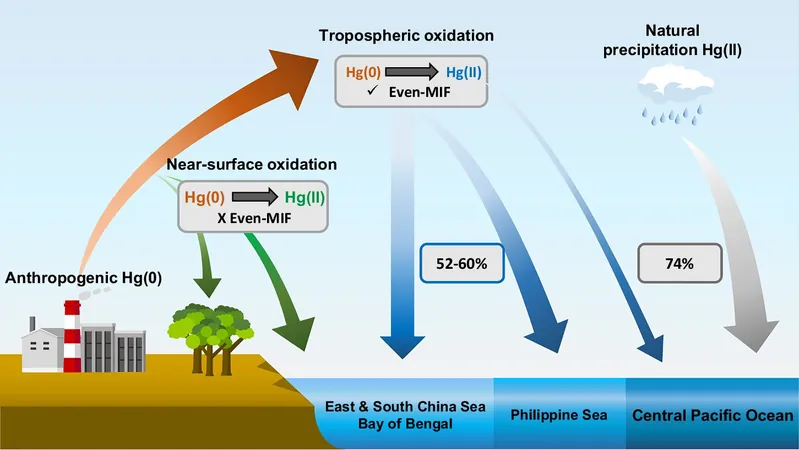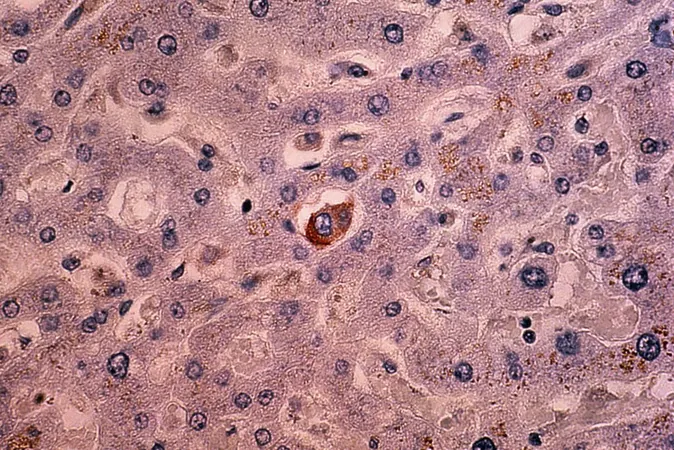
Unmasking the Mercury Menace: How Asian Emissions Pollute the Ocean's Food Chain
2025-09-02
Author: Li
The Journey of Mercury from Asia to the Ocean
In a groundbreaking study, researchers from the Woods Hole Oceanographic Institution (WHOI) and Pohang University of Science and Technology (POSTECH) have unveiled the alarming journey of industrial mercury emissions from Asia into the vast openness of the ocean. Published in the journal Communications Earth & Environment, the research reveals that over half of the mercury released into the atmosphere from Asian industrial activity is transformed into Hg²⁺—a dangerous, more reactive form of this pollutant.
The Neurotoxin Threat to Seafood Consumers
This oxidized mercury is a key precursor to methylmercury, a powerful neurotoxin that accumulates in top marine predators, including the popular tuna. This poses serious public health risks for seafood lovers in the region, as the fish consumed may harbor dangerous levels of this toxin.
Zooplankton: The Ocean's Pollution Detectives
Lead researcher Laura Motta, a marine chemist at WHOI, highlights the importance of zooplankton—tiny creatures at the bottom of the marine food web. "Zooplankton serves as a critical biomarker," she explains. By analyzing mercury isotopes found in these organisms, researchers traced the pathways of bioavailable mercury and uncovered its atmospheric origins and biogeochemical behaviors.
Regional Variations: Why Pacific Tuna Are Affected More than Others
The study clarifies why mercury levels in Pacific tuna are notably elevated near Asian coastal waters, while plummeting further away. It draws a crucial distinction between mercury pollution from the atmosphere and the mercury that seeps into the ocean through coastal regions. Not all mercury behaves the same, and understanding these variations is vital for crafting effective environmental policies.
A Call to Action: The Need for Stronger Mercury Regulations
Sae Yun Kwon, an associate professor at POSTECH and the study's corresponding author, emphasizes the importance of dissecting how human-made mercury traverses ecosystems to evaluate the effectiveness of the UN’s Minamata Convention—an international treaty established to safeguard environmental and public health from mercury exposure.
Rethinking Mercury as a Global Pollutant
This research challenges the traditional view of mercury as merely a global pollutant. Instead, it showcases that the origins and transport of mercury can be tracked and potentially managed. Not all forms of mercury are created equal in their mobility and impact.
Toward Proactive Ocean Protection and Human Health
Motta underscores that a successful mercury policy must prioritize the reduction of bioavailable forms, particularly gaseous elemental mercury, which is prone to long-distance travel and conversion into toxic compounds. Protecting marine ecosystems from pollution is imperative not just for wildlife but also for the health and safety of human populations who depend on these resources.


 Brasil (PT)
Brasil (PT)
 Canada (EN)
Canada (EN)
 Chile (ES)
Chile (ES)
 Česko (CS)
Česko (CS)
 대한민국 (KO)
대한민국 (KO)
 España (ES)
España (ES)
 France (FR)
France (FR)
 Hong Kong (EN)
Hong Kong (EN)
 Italia (IT)
Italia (IT)
 日本 (JA)
日本 (JA)
 Magyarország (HU)
Magyarország (HU)
 Norge (NO)
Norge (NO)
 Polska (PL)
Polska (PL)
 Schweiz (DE)
Schweiz (DE)
 Singapore (EN)
Singapore (EN)
 Sverige (SV)
Sverige (SV)
 Suomi (FI)
Suomi (FI)
 Türkiye (TR)
Türkiye (TR)
 الإمارات العربية المتحدة (AR)
الإمارات العربية المتحدة (AR)